McGraw Hill
Mc Graw Hill: Mastering the Common Core Accessing Complex Texts With M. Russo
This professional development video is instructed by the National Reading Consultant, Marisa Russo. She provides explanations about what makes a complex text, why text complexity is important, and techniques to help student access...
ReadWriteThink
Read Write Think: Once Upon a Fairy Tale Teaching Revision as a Concept
Contains plans for five lessons that teach the difference between revision and editing using fractured fairy tales. In addition to objectives and standards, this instructional plan contains links to sites used in the lessons as well as...
Other
Reading Quest: Making Sense of Social Studies
Teaching students to read well in areas other than language arts requires teaching and reinforcing the kinds of reading strategies taught here. There are 27 strategies, ranging from brainstorming to word mapping. The site includes PDF...
ReadWriteThink
Read Write Think: Charting Characters for a More Complete Understanding
Contains plans for one 60-minute lesson that teaches about a reading strategy called Character Perspective Charting. In addition to student objectives and standards, these instructional plans contains links to PDF handouts and links to...
Reading Rockets
Reading Rockets: Building Background Knowledge
The importance of background knowledge is especially salient in the age of Common Core. This article offers practical classroom strategies to build background knowledge such as using contrasts and comparisons and encouraging...
ReadWriteThink
Read Write Think: Defining and Exploring an Author's Stylistic Choices
Contains plans for two lessons that teach students how to recognize an author's use of style in literature. These plans use "Their Eyes Were Watching God" by Zora Neale Hurston as an example, but the basic ideas can be adapted to other...
ReadWriteThink
Read Write Think: Avoiding Sexist Language by Using Gender Fair Pronouns
Contains plans for two lessons that teach students how to avoid gender stereotyping while using pronouns. In addition to objectives and standards, this instructional plan contains links to sites used in the lessons as well as assessment...
ReadWriteThink
Read Write Think: Researching Information: Comparing Electronic and Print Texts
This lesson allows students to compare and contrast print text structure with that of an online site. Students work together and use worksheets in comprehending the informational text. CCSS.ELA-Literacy.WHST.6-8.7 Conduct short research...
ReadWriteThink
Read Write Think: Building Word Knowledge Through Informational Websites
A lesson through which students identify, understand and work with important vocabulary words found in an online article on biodiversity. Based on the "Ten Important Words Plus" strategy that teachers can employ as part of vocabulary and...
ReadWriteThink
Read Write Think: Anticipation Guide
Anticipating is an effective reading strategy for readers of all ages. Utilize this template and graphic organizer to help your students become better readers.
Curated OER
Mc Graw Hill: Part 1 Reading: Literature: Compare and Contrast Characters
Learn how to compare and contrast characters on this site. Understand how comparing and contrasting characters is important for reading comprehension.
Curated OER
Mc Graw Hill: Part 1 Reading: Literature: Summarize
Summarizing is a key skill needed in reading comprehension. This page describes how to summarize main ideas in a text. Click on Model button for a model with explanation and then click on Practice (Bottom Right)
Other
Ccss Literacy E Handbook: Informational Text: Understand Precise Vocabulary
A short explanation of the importance of using precise word choice in writing and using context clues to help you understand the meaning of precise words when reading. Click on Model to for an example with explanation and then click on...
Writing Fix
Writing Fix: Revision Checklists [Pdf]
Walk your students through the writing process with this revision checklist. Students review their idea development, organization, sentence fluency and word choice. Click on appropriate grade-levels to get the desired checklists....
Better Lesson
Better Lesson: Native American Petroglyphs Close Read Compare and Contrast
Students will read an article by Byron Loosle on the meaning of Native American symbols and compare that to a video clip of an actual Native American explaining the symbols. There is a difference of opinion and students will weigh both...
ReadWriteThink
Read Write Think: Contemporary Proverbs
Interesting lesson plan that allows students to "update" traditional ancient proverbs to enhance their own understanding. Students also create original proverbs after reading.
Read Works
Read Works: Water on the Earth
[Free Registration/Login Required] This informational text passage discusses the processes of weathering and erosion, along with their effects. This passage is a stand-alone curricular piece that reinforces essential reading skills and...
AdLit
Ad lit.org: Create Reading Accountability
Engaged, accountable reading requires students to interpret, and respond, often creatively. This article suggests several personalized ways to hold students accountable for their reading.
Lumen Learning
Lumen: Writing Process: Finding Evidence
This lesson focuses on finding evidence to support your thesis, how to incorporate your findings into your own work, and how to effectively quote, paraphrase, and summarize your information. CCSS.ELA-Literacy.CCRA.W.9, W.11-12.1b...
Other
Critical Reading: Three Ways to Read and Discuss Texts
Designed to help students think about their reading and writing skills, this page offers three different ways to interpret and discuss texts.
Florida Center for Reading Research
Florida Center for Reading Research: Text Analysis: Incredible Inferences [Pdf]
A lesson plan in which students play a game to cover words on a game board by making inferences. Materials are included.
ReadWriteThink
Read Write Think: Guided Comprehension: Summarizing
Lesson that introduces young scholars to the comprehension technique of summarizing. Students learn using the QuIP (questions into paragraphs) method which involves organizing information and putting it in writing.
ReadWriteThink
Read Write Think: Comparing and Contrasting: Picturing an Organizational Pattern
Contains plans for two 50-minute lessons that teach about the comparison/contrast organizational pattern. In addition to objectives and standards, this instructional plan contains links to PDF handouts and sites used in the lessons as...
ReadWriteThink
Read Write Think: A Picture's Worth a Thousand Words: Image to Narrative
This lesson, which can be adapted to fit with any picture you choose, works for students of all levels.

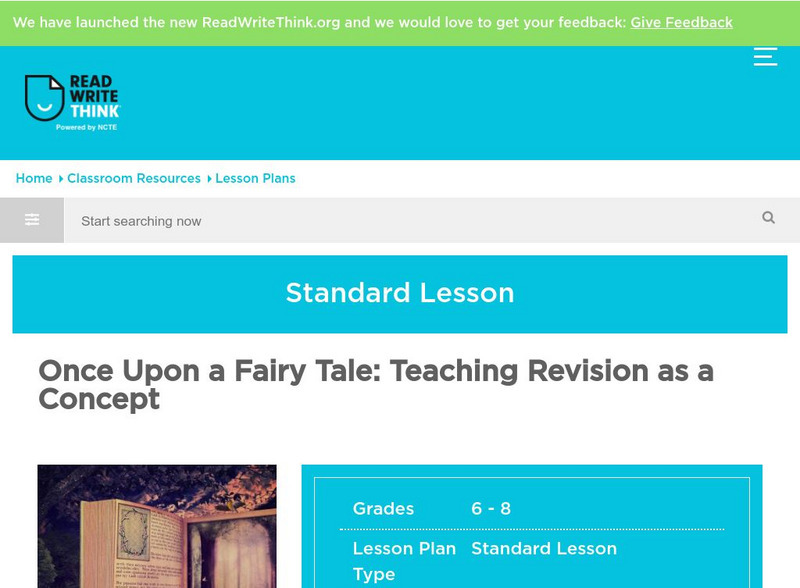
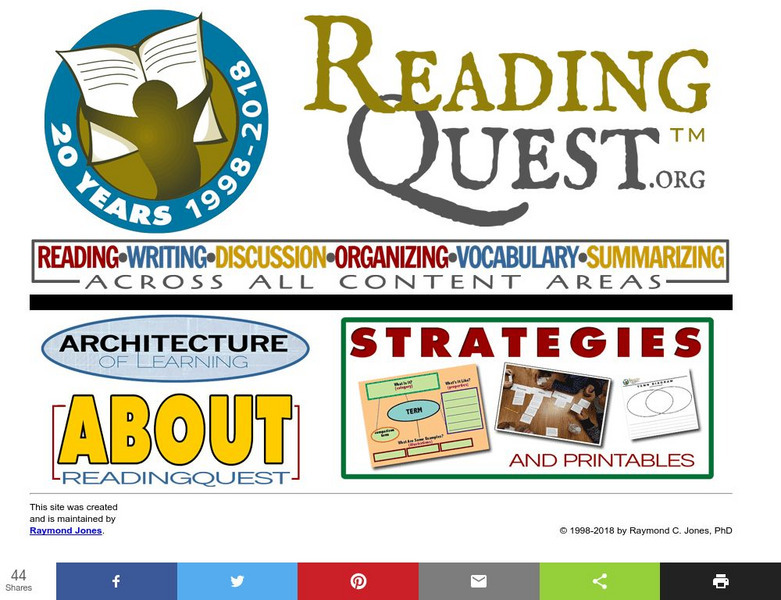







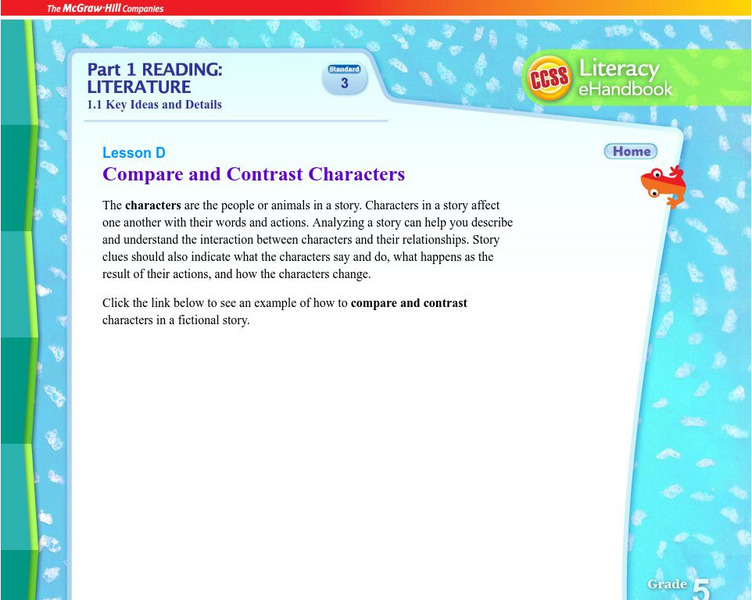
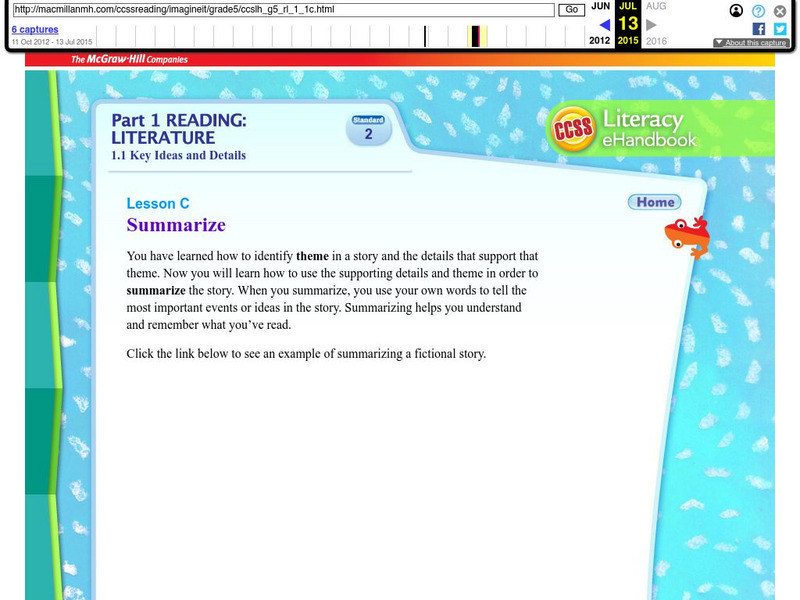


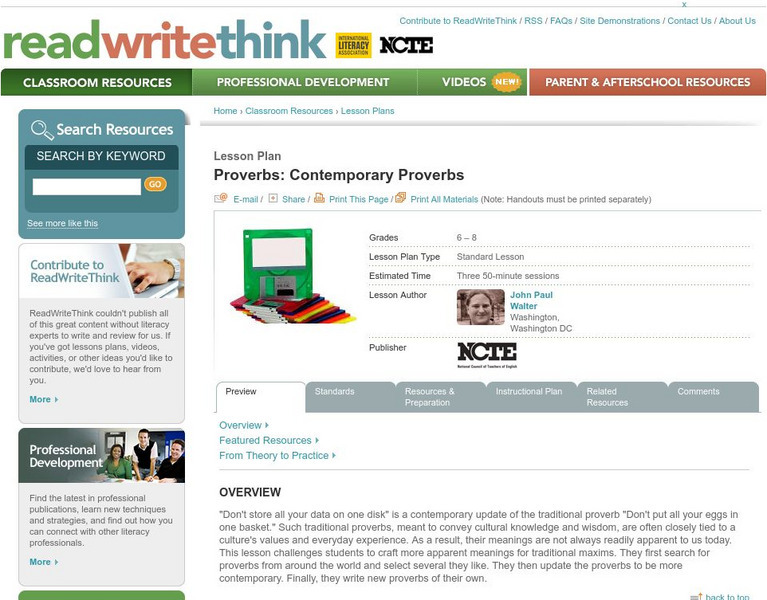

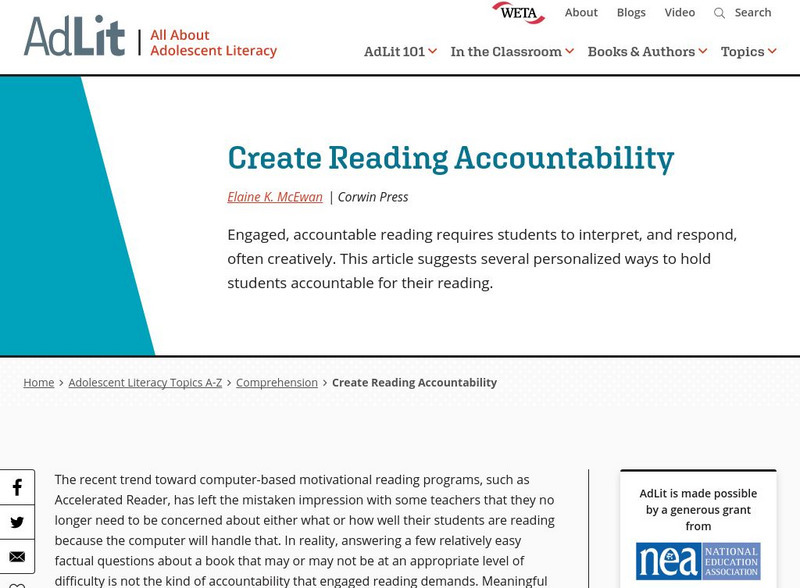
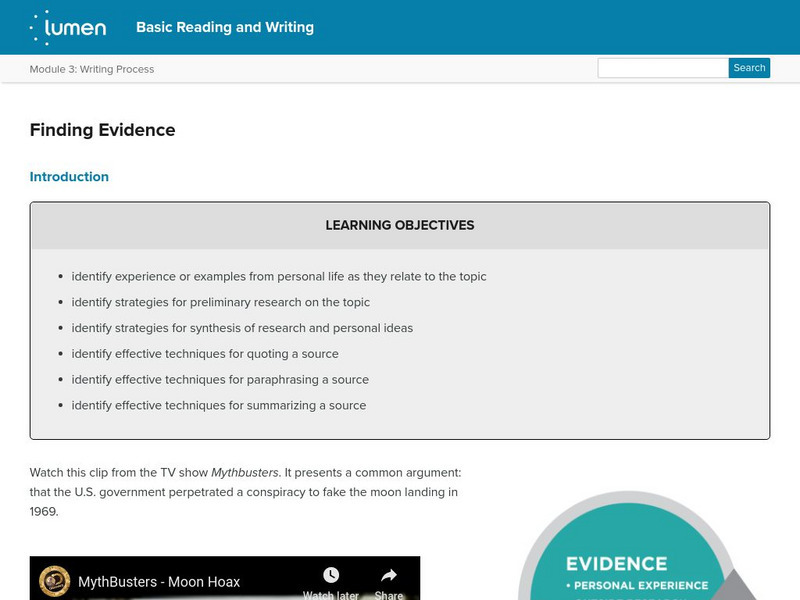

![Florida Center for Reading Research: Text Analysis: Incredible Inferences [Pdf] Lesson Plan Florida Center for Reading Research: Text Analysis: Incredible Inferences [Pdf] Lesson Plan](https://content.lessonplanet.com/knovation/original/509092-1f8464bfd22060486a7ced8fa8c4310e.jpg?1661786985)


